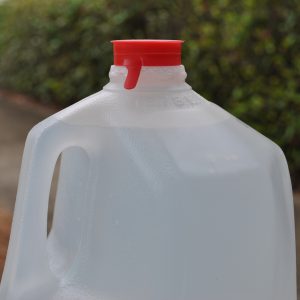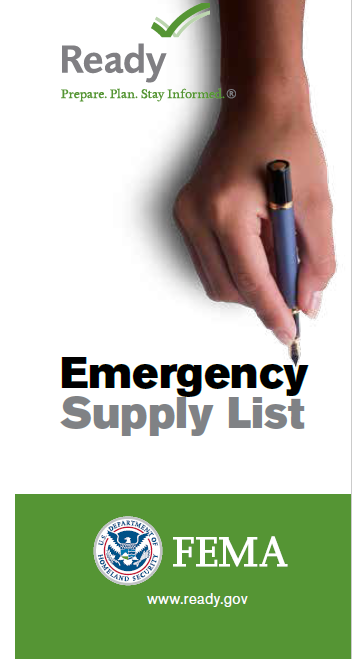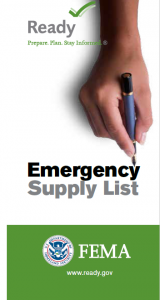Preparing Your Emergency Water Supply

Commercially bottled water is a great choice for your emergency water supply. Store the bottles in a cool, dry place and have enough water on hand for each person (including pets) to have 1 gallon of water per day for 7 days. (Photo source: Samantha Kennedy)
Hurricane season is in full swing and will last through November 30. If you have not prepared your emergency supply kit, now is the time, BEFORE a hurricane is imminent.
The most important item in your emergency supply kit is clean drinking water. Clean water is essential for drinking, cooking, and basic personal hygiene during and after an emergency event.
You may stock up on clean water in one of two ways: by purchasing commercially bottled water from the supermarket, or by bottling it yourself.
If you purchase commercially bottled water, take heed of the use by date. While water does not spoil, per se, the quality of the water can diminish over time. The bottles may also start to break down as well, causing leakage or contamination. It is recommended to replace your emergency drinking water supply each year to maintain optimal safety and freshness.
Bottling your own water takes a little more effort, but can be just as safe as and will cost less than buying it commercially. Choose the proper containers. Glass may be sturdy, but it is heavy and can break, so use it sparingly. Plastic two-liter soda bottles and gallon-sized water jugs are ideal for storing water. Only use food-grade plastic containers and not containers previously used for chemicals such as bleach.
Sanitize the containers with a solution of 1 teaspoon of bleach per quart of water. Rinse the containers with clean water after sanitizing. Once the containers are filled with clean water, seal them with tight-fitting caps, label them as drinking water along with the bottling date, and store bottles in a cool, dry place.
Be sure to follow all boil water notices, especially if your water comes from a municipal source. If you get your water from a private well and are uncertain whether it is contaminated, it is better to err on the side of caution and boil water vigorously for 3 to 4 minutes before using it.
Boiling water is the most effective way to kill harmful bacteria that may be present. However, another effective means of purifying water is by adding bleach to the water. The type of bleach is important. Only use 5.25% household bleach free of perfumes, dyes, and color-safe or other additives. Eight (8) drops of bleach per gallon for clear water or 16 drops per gallon for cloudy water are the recommended amounts for effective purification.
How much water should you store in your emergency supply kit? At a minimum, one (1) gallon per person (including pets) per day for at least seven days is the recommended amount. This should be enough for drinking, food preparation, and basic personal hygiene. You may want to store more water as a precaution, if necessary.
For more information about preparing an emergency water supply, please refer to the UF/IFAS publication Preparing and Storing an Emergency Safe Drinking Water Supply.


